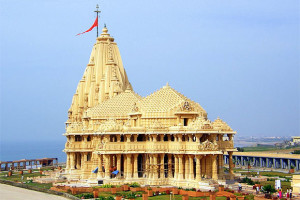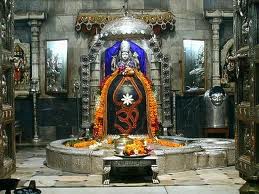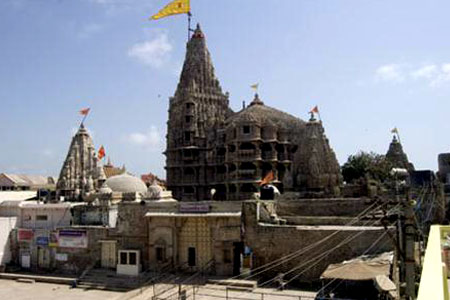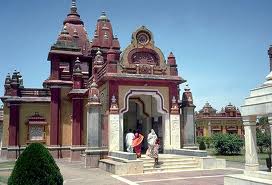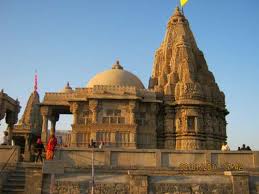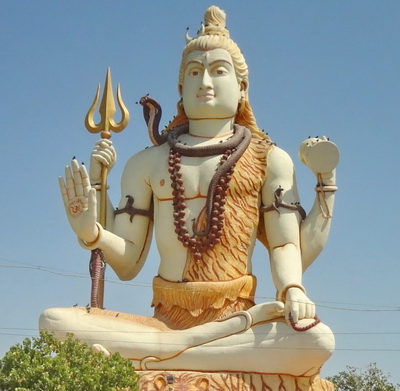India /Gujarat /Jamnagar /Dwarka
Sight Address : Somnath Temple, Junagarh District, Somnath 362110, India Edit
Detail InformationEdit
Somnath Temple (Gujarati: સોમનાથ મંદિર Sanskrit: सोमनाथ मन्दिर) located in the Prabhas Kshetra near Veraval in Saurashtra, on the western coast of Gujarat, India, is one of the twelve Jyotirlinga shrines of the God Shiva. Somnath means “The Protector of (the) Moon God”. The Somnath Temple is known as “the Shrine Eternal”, having been destroyed many times by various kings and rulers. Most recently it was rebuilt in November 1947, when Sardar Vallabhbhai Patel visited the area for the integration of Junagadh and mooted a plan for restoration. After Patel’s death, the rebuilding continued under K. M. Munshi, another minister of the Government of India.
HistoryEdit
Somnath in Gujarat, is one of the twelve Jyothirlinga, other are Mallikarjuna at Srisailam in Andra Pradesh, Mahakaleswar at Ujjain in Madhya Pradesh, Omkareshwar in Madhya Pradesh, Kedarnath in Himalayas, Bhimashankar in Maharastra, Viswanath at Varanasi in Uttar Pradesh, Triambakeshwar in Maharastra, Vaidyanath Jyotirlinga, Deogarh in Deoghar, Jharkhand, Nageswar at Dwarka in Gujarat, Rameshwar at Rameswaram in Tamil Nadu and Grishneshwar at Aurangabad in Maharastra. As per Shiv Mahapuran, once Brahma (the Hindu God of creation) and Vishnu (the Hindu God of protection) had an argument in terms of supremacy of creation. To test them, Shiva pierced the three worlds as a huge endless pillar of light, the Jyotirlinga. Vishnu and Brahma split their ways to downwards and upwards respectively to find the end of the light in either directions. Brahma lied that he found out the end, while Vishnu conceded his defeat. Shiva appeared as a second pillar of light and cursed Brahma that he would have no place in ceremonies while Vishnu would be worshipped till the end of eternity. The Jyotirlinga is the supreme partless reality, out of which Shiva partly appears. The Jyothirlinga shrines, thus are places where Shiva appeared as a fiery column of light. Originally there were believed to be 64 Jyothirlingas while 12 of them are considered to be very auspicious and holy. Each of the twelve Jyothirlinga sites take the name of the presiding deity – each considered different manifestation of Shiva. At all these sites, the primary image is Lingam representing the beginning-less and endless Stambha pillar, symbolizing the infinite nature of Shiva.
Must SeeEdit
Must See
Visiting TimeEdit
6:15 am and 9:00 pm.
Closed OnEdit
N.A.
Best Season to VisitEdit
October to June
Best Time To VisitEdit
Morning,Evening And Night.
Time Required for SightseeingEdit
N.A.
Ticket Required : No Edit
Individual National Adult Rs. : N.A.
Kids Rs. : N.A.
Individual Foreigner Adult Rs. : N.A.
Kids Rs. : N.A.
Still Photo Camera Rs. : N.A.
Video Camera Rs. : N.A.
Guide Required : No Edit
Approximate cost: N.A.
Dress Code (If Any) : No Edit
Dress Require: N.A.
Restaurants NearbyAdd / Edit
- N.A. ; N.A. ; Ph/M – N.A. ; Food Serve – N.A.
How to ReachEdit
Taxi : Transfer taxi services are available.
Bus : An excellent network of state and national highways runs through the entire state of Gujarat connecting it with other Indian cities. Interstate and local buses connect Dwarka with other cities within and outside the state. Dwarka is on the state highway from Jamnagar to Dwarka. Direct buses available from Jamnagar and Ahmedabad. Dwarka municipality runs a local bus to take the pilgrims across various destinations of religious and tourist prominence. The departure timings of the bus are 8:00 & 14:00 each day while the total time of the journey is around five hours. The ticket prices are Rs. 30 for an adult and Rs. 15 for a child. Tickets can be booked near the vegetable market, which is also the starting point of the journey. Major destinations covered are Nageshwar, Gopi Talao, Bet Dwarka and Rukminimata temple.
Train : Dwarka has its own railway station which connects it to other major cities in India. Regular trains are available from nearby cities such as Jamnagar, Rajkot and Ahmedabad. The best way to reach the place is to board a train to any of the major cities around and take a train to Dwarka from there. Dwarka is a station on the Ahmedabad-Okha broad gauge railway line, with trains connecting it to Jamnagar (137 km), Rajkot (217 km) and Ahmedabad (471 km), and some trains that continue all the way down the coast through Vadodara, Surat, Mumbai, Goa, Karnataka, to the southern tip of India in Kerala.
Air : Jamnagar is the nearest airport from Dwarka while Rajkot is another option to access the place by air. Government run Indian Airlines and other private airlines such as Jet Airways and Air Deccan operate regular services to both these locations. Ahmaedabad is another major airport which is connected by regular flights from all the major Indian cities.
Others : Local transport facilities including tongas, auto rickshaws and buses are available from the main town.
Things to CarryEdit
Carry bottle of drinking water. Sun-screen, sun glasses, tissue-rolls, roll of duct-tape, extra batteries, torchlight, water, energy-bars are ‘must-carry’ along with a First-aid kit.
Safety / WarningEdit
Don’t wear footwear in Dwarka and in Somnath, there are so many temples and holy places that you are constantly wearing and removing your footwear. It may be better to use slip ons for such visits.
Don’t dress immodestly.
Electronic items not allowed.
HelplineEdit
Police 100
Fire 101
Ambulance 108
Child Helpline – 1098
Women Helpline Number -1091
